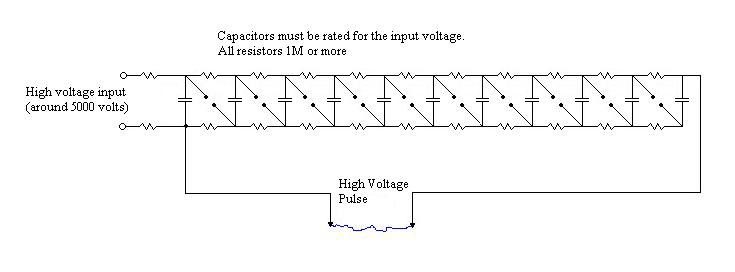|
A marx generator is a clever way of charging up a number of capacitors in parallel and
discharging them in series. The output voltage is the voltage in each of the capacitors multiplied by the number of stages.
The Cascade multiplier uses diodes and capacitors to multiply the voltage whereas the marx generator uses resistors to charge
the capacitors and spark gaps to discharge them. When the voltages in the capacitors are high enough to trigger the spark
gaps, the capacitors are instantly connected in series resulting in the voltages in the capacitors adding up to produce very
large outputs. The resistors connect the charging supply to the resistors but limit the capacitors discharge rate during spark
gap conduction. In order for the marx generator to function, the spark gaps must all fire in less time than it would take
for any single capacitor to discharge through it's resistors. Fortunately, spark gaps reach maximum conductance in about 10
nanoseconds.


Here is a photo of my main marx generator. I decided to mount it on a piece of MDF to make
it look as professional as possible. The large ceramic capacitors were bought on Ebay from a seller in Lithuania. They are
ex Russian military capacitors according to the seller an are rated at 4.7nF 6300v. One of the capacitors is shown below.
To power my marx generator I use my High voltage power supply.



|

